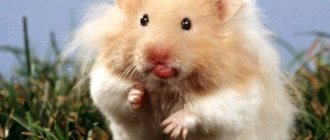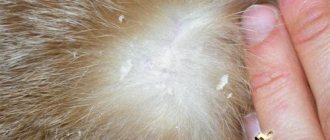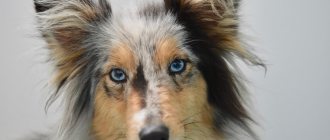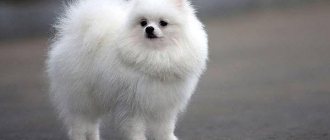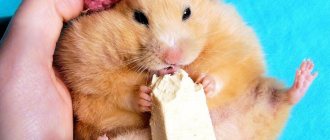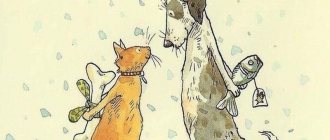A more correct name for this species is the Sungur hamster (Phodopus sungorus), but it was the name “Djungarian” that stuck, coming from the geographical region of China, from where these rodents were brought. They belong to the hamster family and, thanks to the vegetation on their legs, which completely covers their toes, to the genus Bryopods.
These animals can be distinguished by their pointed muzzle, protruding ears, and often by a characteristic stripe on their back.
These cute fluffies reach a maximum of 10 cm in length and are extremely friendly, playful pets, which is why they have become favorites of children. These animals can be distinguished by their pointed muzzle, protruding ears, and often by a characteristic stripe on their back. The tail is quite small in relation to the body, almost invisible, but the head against the background of the body is quite large , with large black (or red, in the case of some albinos) beady eyes, the body shape is round, weight varies from 30 to 65 g .
Dzungariki are very widespread in the southern part of Russian Siberia, Kazakhstan and Khakassia. Due to their habitat, dzhungariks have become popular in Russia. They can even be called the Russian hamster because they live in some of the arid regions of this country.
The white Djungarian hamster is no different from the rest of its relatives
Types of white hamsters
Djungarian and Syrian hamsters can be white. These two breeds are the most sought after representatives of the species, and as soon as you look at the representatives of both breeds, you will immediately understand how the Syrian hamster differs from the Djungarian.
They can be distinguished by size - Syrian ones, unlike their Dzungarian counterparts, reach an average of about 13-15, and sometimes 20 cm in length. Females tend to be larger and more prone to bouts of bad mood.
There are hamsters with a bad character, but for the most part Syrians have a good disposition and are quite good at making contact with people . But do not forget that each animal is an individual in its own way, and it is worth observing at least a little of its behavior and the behavior of its fellows before choosing and purchasing. Also, some Syrian hamsters have longer, fluffier fur. The color is mostly red, but there are others.
The size of Djungarian hamsters does not depend on gender, nor does their character. All representatives of this breed are quite friendly and, despite the scent glands visible to the naked eye, they practically do not emit an unpleasant odor. Aggressive individuals are almost never found, which is why Djungarians are bought as pets for children . This type of hamster is the easiest to train to handle, and they even enjoy being gently petted. Their coat, unlike the Syrians, is smooth and of medium length.
REFERENCE! Djungarian hamsters live on average 2-2.5 years, while their Syrian counterparts live 2.5-3.5.
In nature there is only a standard one, the rest are artificially bred
Diet of albino white hamsters
A balanced diet is the key to your pet’s health. The diet must contain proteins of plant and animal origin. In specialized stores you can find a wide range of dry food for rodents, which are quite inexpensive.
Several times a week, fluffies need to be given dairy products, pieces of eggs, worms, boiled fish and chicken. However, food from the owners' table should be given with caution - not all food will be beneficial for the pet. All hamsters should not be given foods containing dyes or preservatives. Besides:
- Sweet, smoked, pickled, canned and salted.
- Watermelons, almonds and exotic fruits.
- Sorrel.
- Honey.
If you want to treat your baby to sweet fruits, remove the seeds from them before feeding - the acid they contain is a dangerous poison and can threaten the life of the hamster.
Recommended Products:
- Peas, corn, sunflower and pumpkin seeds, nuts (except almonds).
- Beet.
- Cabbage (except white cabbage).
- Carrot.
- Pears and apples.
In winter, they can be fed with dried fruits.
The animals are fed twice a day. You can decide on the portion sizes yourself after watching your baby. Living in natural conditions with a lack of moisture, hamsters have learned to be content with liquid from vegetables from plant juice - replenish their supplies of greens, cucumbers and lettuce daily.
Djungaric colors:
- standard (represented by brown fur with a gray tint and a light belly)
- sapphire (gray back with a bluish tint and white or light gray belly)
- pearl (matte white wool, sometimes diluted with gray spaces)
- tangerine (similar to the Syrian, represented by a light red fur color with a cream tint)
In nature there is only the standard one, the rest are artificially bred. Albinos are rare among Djungarian hamsters. Djungarian hamsters are capable of changing color with the onset of cold weather in the wild.
However, even at home, if the air temperature remains around 16 degrees for several days, the color of their fur will change to lighter or even white, which is much less common. Naturally, this does not apply to initially white pets. Has your hamster changed its fur color?
Some animals change color not completely, but partially, in spots, which looks unique, exotic, very interesting and beautiful. For example: dark gray spots on a white coat with the same dark stripe on the back.
IMPORTANT! Many people are looking for a black dzhungarik, but this breed does not have this color. If you are offered a black hamster, it is most likely a Syrian or Campbell's hamster.
What breeds are white in color?
We have already figured out that snow-white fur is not fundamental in any of the hamster breeds. But thanks to the miracles of selection, white hamsters were bred in the following systematic units:
- Syrians. These are not completely white hamsters, their fur is slightly yellowish. Long-haired Syrians - Angora hamsters - can also have whitish fur. Such pets are distinguished by their very large size, their average height is about 16 cm. This is one of the largest representatives of the Hamster family, which lives at home.
- Dzungariki. The snow-white color of dzungaria is called “pearl”. These are small creatures with body sizes up to 10 cm, black shiny eyes and bare arms. Often a gray stripe runs along the fur along the spine, but it may not exist. Dzungarian Khoma acquires a light color closer to winter. Therefore, if you want to get a snow-white dwarf, you need to buy it in the summer! The animal lives a very active life, constantly running around in a wheel, but at the same time it is very timid.
- Campbell's hamsters. But white representatives of this breed can be bought in winter, since seasonal color changes are not typical for them. Campbells are light silver or whitish with black spots. They have white paws covered with fur.
Breeders have still not been able to breed a Roborovsky hamster with a snow-white color (not counting albinos). But this breed does not need this, they are already cute.
The photo shows a Djungarian white hamster:
White dwarfs - video
Whatever color you choose for your future pet, it is important to remember that any hamster needs appropriate care. Whether it is a white or brown hamster, everyone needs a spacious home, a house for daytime rest, timely change of bedding, and toys for physical activity, because hamsters are prone to obesity. With proper care, the animal will be healthy and its fur will be clean. And keep in mind that the Djungarian hamster is a nocturnal animal. During the day he sleeps, and towards evening he begins an active lifestyle.
Care and maintenance
The downside to keeping Djungarian hamsters is that they live a short life - only 2-3 years. You need to make every effort and create comfortable conditions so that the animal lives longer.
Regular walks around the apartment
If you have enough time to monitor your hamster as he walks around the apartment, you can let him out.
Did you know? In nature, a male
hamster can mate with many females, but only helps raise the offspring of one.
But don't leave it unattended and remember:
- they climb up easily, but become very clumsy when going down and can fall;
- rodents love various crevices in which they can get stuck;
- various wires and sockets should be out of reach of hamsters;
- containers with water must be tightly closed or removed;
- cacti, geraniums and other dangerous or poisonous plants should also be hidden;
- you need to be careful with fabric products (carpets and upholstered furniture), because hamsters love to carry scraps of material into their nest;
- if there are cats or dogs in the house, they need to be locked somewhere for a while;
- Look carefully where you stand or sit so as not to crush your pet.
An alternative to simple walks around the apartment can be moving the hamster in a special ball. This is a transparent plastic sphere with an opening hole where the hamster can be placed - so he can travel around the cage and throughout the house. This movement is much more interesting than a running wheel. The animal is busy and will not do any harm.
Grooming
The Djungarian hamster is a very clean animal and takes care of its fur on its own, so it does not need water treatments. He “bathes” in a container of sand and licks the fur. Many owners never wash their pets, but if the rodent is very dirty, it can be washed under a gentle stream of warm water.
Immediately after this, it must be dried and warmed so that the animal does not catch a cold - a cold is almost always fatal for them. In addition, it is forbidden to wet your head while swimming. In general, bathe the animal only as a last resort; It’s better to just wipe the fur with a damp cloth.
Djungarians have short fur, so cutting and combing them is not necessary. Well, if such a desire appears, use a toothbrush or doll comb for combing. These procedures can psychologically traumatize the hamster, so think before you “care” for your pet in this way.
Hamsters can go into torpor (different from hibernation in time) for several hours. In this state, they tolerate low temperatures or lack of food. Take the animal in your arms and warm it up - and it will come to life.
Care for claws and teeth
The animals grind their claws down on special sticks on their own. Nails need to be trimmed only when they become very long. It is advisable to have this done by a veterinarian, but if you decide to do it yourself, you can purchase a nail clipper or use nail scissors.
We recommend reading more about breeding and reproducing Djungarian hamsters at home.
This must be done very carefully so as not to catch the blood vessels and cut off only the keratinized transparent part of the claw. The presence of a mineral stone in the cage has already been mentioned - it is needed to grind down the teeth, because in hamsters they grow throughout their lives. You can also buy special sticks or toys for this purpose.
Cleaning the cage
Many people think that a rodent in an apartment means a constant unpleasant odor, but everything will depend on you. If you clean frequently and thoroughly, no unwanted odors will arise. Cleaning is carried out as needed, but at least once every 10 days.
The process itself consists of the following stages:
- Before doing the actual cleaning, you need to move the animal to another cage or jar.
- Pull out the tray, wash it in plenty of warm water, preferably without using chemicals.
- After this, change the bedding, but leave some so that the animal can smell its scent.
Important! When cleaning, you need to try to leave everything in its place , because the animal has put a lot of effort into each structure.
Hamsters love to store food in reserve, so after checking its “pantry”, throw away only the spoiled foods and leave the good ones. - Wipe the cage bars well.
- Now you need to pay attention to all the accessories. Wash them too well in warm water and place them back.
- Particular attention should be paid to the toilet. You need to wash it a couple of times a week.
- At the end of cleaning, give the animal food to reduce its stress - after all, it will need to run around everything and re-mark every corner.
Video: how to clean a hamster's cage
What is the difference between the white Syrian hamster and the rest?
The white Syrian hamster has no fundamental differences from Syrian hamsters of other colors. At the same time, white coat color is less common than others. White hamsters have all the characteristics of albino animals, such as red eyes. This makes it easy to distinguish it from rodents with cream fur and ordinary gray eyes.
Caring for a white hamster is not difficult. These rodents, like all Syrian hamsters, are unpretentious, which is not surprising - after all, their homeland was hot desert spaces, where every grain is worth its weight in gold.
In fact, all care for hamsters comes down to feeding, adding water to the drinking bowl and cleaning the cage (2-3 times a week). The cage should be lined with a thick layer of sawdust, equipped with a wheel, drinking bowl and feeder. Every day, new water is added to the animal and food is given (preferably at the same time). Woolen threads, cotton wool and straw should not be used as bedding for the cage.
The hamster must be periodically released from the cage to walk around the apartment . It is advisable to teach him from childhood not to be afraid of human hands and presence. Having become accustomed to its owner, the Syrian hamster remains tame and docile throughout its life.
The favorite food of Syrian hamsters is boiled cereals, milk, pasta and wheat bread. A complete diet for a hamster is impossible without vitamin supplements and boiled meat.
The wild ancestors of the Syrian hamster lead a solitary lifestyle, jealously defending their home and territory from their neighbors. Starting from the 5th or 6th week of life, young hamsters acquire a fighting character.
In this regard, domesticated hamsters, which to this day have partially retained the habits of their ancestors, are kept alone, with the exception of cases when the female is briefly allowed into the male’s cage for reproduction. If you let a male into a female’s cage, the female partner is unlikely to show him favor. At such moments, you need to look after your pets in order to have time to break up their fight, the likelihood of which remains in any case.
Wild Djungarian hamsters live in families, which means it is permissible to keep several hamsters in one cage. It is advisable to keep them in pairs, seeding the grown-up cubs. The spaces between the bars of the cage should be narrow so that small hamsters cannot escape. Djungarian hamsters need to be handled and fed every day, otherwise the rodent will no longer recognize the owner and will again become wild and nervous.
Syrian and Djungarian hamsters are white
